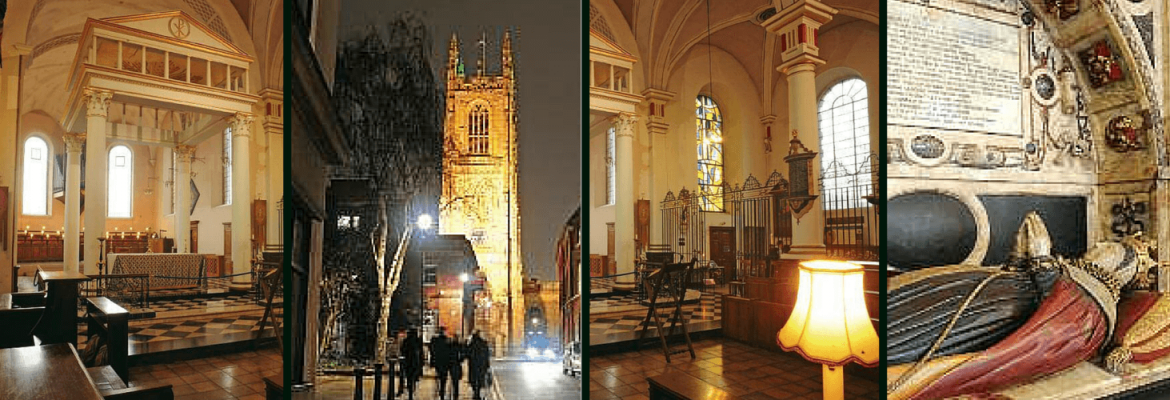“The cathedral site on Iron Gate has been used for Christian worship since around 943, when it is believed All Saints’ was founded by King Edmund”
Upgraded from parish church to become one of Britain’s newest cathedrals, All Saints’, Derby, has a long and intriguing history going back more than 1000 years.
Bonnie Prince Charlie prayed here and ordered the bells rung but, with London unprotected and at his mercy, opted to turn back to Scotland the next day.
Bess of Hardwick, one of the most colourful characters of Tudor England, is buried here. Georgina Duchess of Devonshire, an equally colourful 18th century character, also rests in the same Cavendish family vault.
Derby Cathedral is an eclectic mix of the ancient and the new. Its tower has stood for 500 years while the rest of the church has been rebuilt and modified around it, then extended in the Seventies for its role as a cathedral.
Joseph Wright, the 18th century Derby artist famous for his portraits and his portrayal of the Industrial Revolution and the technology of the time, is commemorated here. What a contrast between Wright’s detailed, almost photographic realism and the striking blue and yellow abstract design of the two stained glass windows created by the 20th century Welsh artist Ceri Richards. Both artists, however, are masters of light.
Richards’s mastery is there for everyone who enters to see. The windows on either side of the altar are the only coloured glass in the cathedral. Installed in 1965, they are very much of the Sixties but still work perfectly with the traditional interior.
Getting There: Coach
National Express Coaches offer cheap tickets to Derby. Coaches run frequently from London Victoria coach station, website: (www.nationalexpress.com).
Getting There: Car
From the M1 Junction 25, take the A52 into Derby, then follow the brown tourist signs

